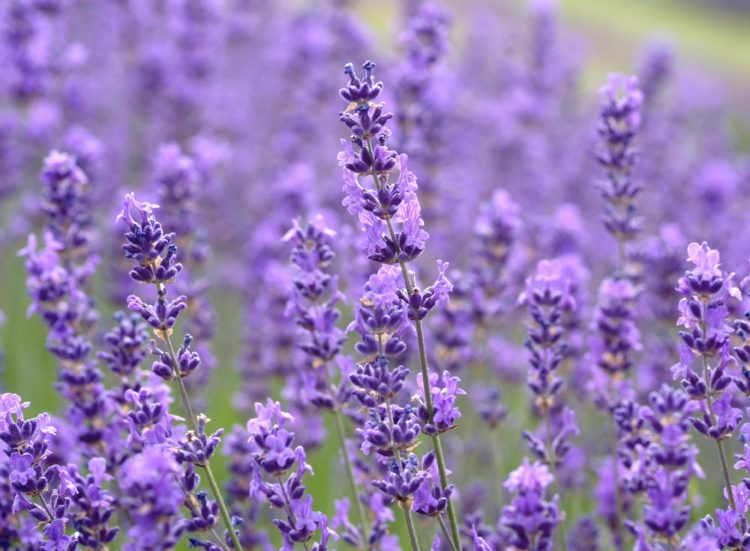It is also known as Lavandula angustifolia “Vera.” Lavender Vera is an heirloom type of English lavender that is loved for its sweet smell and ability to survive in cold weather. Lavender Vera is great for gardens, containers, sachets, potpourri, aromatherapy, and making lavender oil because it grows slowly and has lots of flowers.
Overview of Lavender Vera
Lavender Vera is considered one of the best English lavender cultivars for cold climates. It was selected by Dr. Vera Gatez in 1930 while she was working at East Malling Research Station in England. The lavender was trialed for over 30 years and proven to withstand cold winters in USDA zones 5-9.
Some key features of Lavender Vera include
- Cold hardy – Can survive winter temperatures as low as -20°F (-29°C)
- Compact size – Grows 16-18 inches tall and spreads 24-30 inches wide
- Abundant blooms – Flower spikes are thin but plentiful
- Sweet fragrance – Has a rich, floral aroma perfect for sachets and potpourris
- Purple-blue flowers – Lavender-blue petals with dark purple calyxes
Lavender Vera grows best in full sun and well-drained soil. It’s drought tolerant once established. The lavender blooms in early summer again in early fall if trimmed after initial flowering. It’s attractive to pollinators like bees and butterflies.
Growing Lavender Vera
Lavender Vera thrives when grown in a sunny location with lean sandy or gravelly soil. The following tips will help you successfully grow this English lavender variety
-
Sun—Plant in full sun, with at least six hours of direct sunlight a day if possible. Morning sun is especially important.
-
Soil – Lavender prefers sandy, rocky soil that drains quickly. Amend clay soils with sand or gravel to improve drainage.
-
Spacing – Space plants 18-24 inches apart for adequate air circulation. Crowding increases humidity and disease risk.
-
Watering – Water weekly until established, then water deeply only when soil is dry 2-3 inches down. Too much moisture causes root rot.
-
Fertilizer – Apply slow-release fertilizer at planting. Avoid high-nitrogen fertilizers which cause excessive foliage growth.
-
Pruning – Trim plants by 1/3 after initial blooming to shape and encourage reblooming. Avoid cutting into woody parts of plants.
-
Mulch: Cover plants with a 2 to 3 inch layer of gravel mulch to keep water in, keep weeds away, and make drainage better.
-
Winter care: If it gets below -10°F, cover plants with evergreen boughs or landscape fabric to keep them safe. Avoid excessive moisture.
Using Lavender Vera
The sweetly fragrant flowers and oil of Lavender Vera have many uses:
-
Cut or dried flowers – Excellent for floral arrangements. Cut blooms just after buds open. Air dry small bundles upside down.
-
Potpourri – Dried flowers hold their scent well in potpourri. Mix with other fragrant herbs and flowers.
-
Sachets – Place dried lavender in small fabric sachets. Tuck in drawers, closets, or linen chests to lightly scent clothing and linens.
-
Essential oil – Distill flowers to produce high quality essential oil for aromatherapy, massage oils, perfumes, and more.
-
Cooking – Use dried or fresh flowers to add flavor to cookies, scones, jelly, lemonade, and other foods and beverages.
-
Crafting – Make wreaths, bouquets, soaps, candles, and other handcrafted items with Lavender Vera for its color and fragrance.
Why Grow Lavender Vera?
Here are some of the top reasons to grow Lavender Vera in your garden:
- Excellent cold hardiness perfect for cooler climates
- Compact, mounding form great for borders and containers
- Profuse blooms over a long season
- Rich, sweet, floral fragrance
- Attracts pollinators like bees and butterflies
- Deer and rabbit resistant
- Drought tolerant and low maintenance
- Abundant flowers for cutting, crafting, and oil production
- Versatile culinary and aromatherapy uses
For gardeners seeking a compact, cold hardy English lavender with exceptional fragrance for arranging, sachets, and potpourris, Lavender Vera is an excellent choice. This heirloom lavender variety has been a cherished garden staple for generations thanks to its stellar performance and appealing floral scent.

Live English Lavender Plant 6 Pack For Sale | Hydroponic Starts
This English lavender plant offering is for six different varieties of “grower’s choice” rooted starter lavender plugs. Our lavender comes in a lot of different colors, including purple, blue, pink, and white. It comes with planting and care instructions.

Top 7 Most Popular Varieties of Lavender (+ Lavender Basics)! // Garden Answer
FAQ
What type of lavender is Vera?
Lavandula angustifolia ‘Vera’ (English Lavender) has proven itself to have superior winter cold hardiness and sweetly fragrant flowers suitable as cut flowers, for sachets and Lavender oil production. An heirloom variety from England, this exceptional Lavender has been a top-rated performer in varietal tests.
What is the difference between lavender spike and Lavender Vera?
The Lavender Spike is taller than the Lavender Vera and has big leaves, short ears, and pale purple flowers that smell stronger of camphor, which isn’t used much in perfumery. Its annual blossoming takes place slightly later, from June-July.
What is lavender also known as?
Lavender, scientifically known as Lavandula angustifolia, is a flowering plant in the mint family, Lamiaceae. It is known for having pleasant smells and is used in many forms, such as essential oils, for their health benefits.
How do you care for Vera lavender?
Make sure to site ‘Vera’ lavender in well-drained soil with plenty of sunshine – more than 6 hours a day is best. Good spacing keeps ventilation high and fungal disease low.
